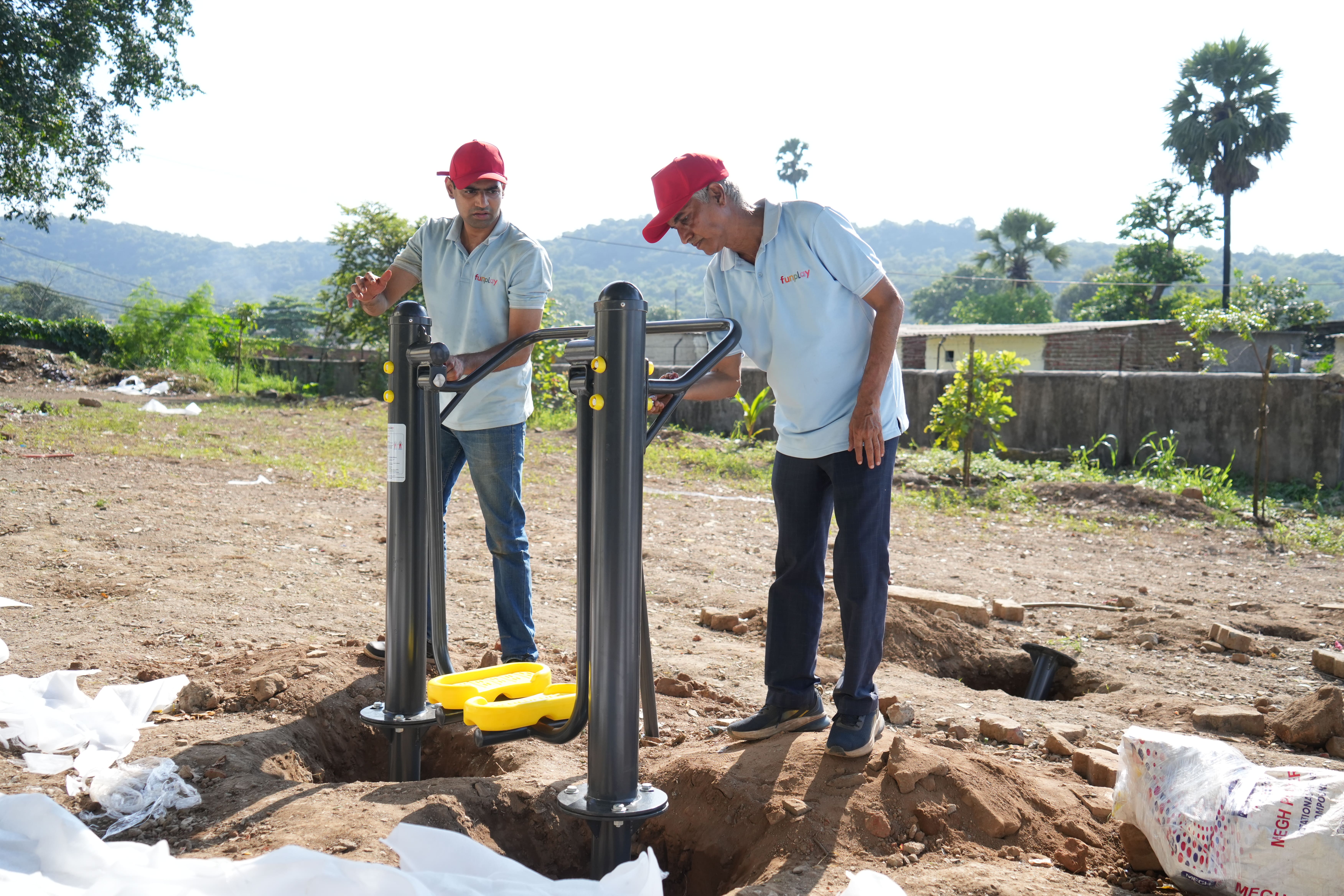Eco-Friendly Playground Designs for Modern Outdoor Spaces
In a world waking up to climate concerns, eco-friendly playgrounds
are no longer just a good idea—they're a necessity. Especially in
India, where rapid urbanisation meets growing environmental
awareness, the need for sustainable outdoor play spaces is
rising.
Whether you're a school, builder, or public planner,
this blog will show you how to design playgrounds that are safe
for kids—and gentle on the planet.
Why Sustainability Matters in Playground Design
-
Environmental impact: Reduce plastic, energy
use, and landfill contribution
-
Healthier play: Non-toxic materials = safer for
kids
-
Community value: Promotes eco-conscious
behaviour early on
-
Green building points: Helps achieve IGBC or
GRIHA certification in Indian projects

Principles of Eco-Friendly Playgrounds
1. Use of Recycled or Natural Materials
- Recycled HDPE, FSC-certified wood, or bamboo
- Rubber tiles from repurposed tyres
- Modular units made from reused polymers
Tip: Look for suppliers who offer BIS-certified, recycled
materials that are weather-resistant and safe.
2. Design That Works With Nature
- Preserve trees and integrate them into play zones
- Use terrain for climbing instead of plastic installations
- Shade from natural canopy instead of synthetic covers
Case in Point: A school in Kerala integrated boulders, slopes,
and water elements for an all-natural play area.
3. Water-Saving Surfaces
-
Permeable flooring materials that allow rainwater recharge
- Grass zones with stepping stones
- Sand pits with drainage
This approach is ideal for schools and parks looking to build with
low-maintenance and drought-friendly solutions.
4. Durability = Sustainability
The longer your equipment lasts, the fewer replacements needed.
Choose:
- UV-stabilised plastics
- Galvanised steel frames
-
Weather-coated finishes suited for Indian heat and monsoons
Key Zones in an Eco-Friendly Playground
-
Climber Garden: Wooden climbing frames and
recycled rope
- Mud Kitchen: For tactile, sensory play
-
Quiet Zone: Hammocks under trees, reading
benches
-
Pollinator Garden: Butterfly-friendly plants
near swings or benches
-
Rainwater Play Area: Simple channels where kids
can interact with monsoon water safely
Indian Context: Why This Works Here
-
Many government schools lack budget for commercial play
zones—but eco-friendly designs can be low-cost
-
Real estate builders can market green play zones as value-add
for urban families
-
Aligns with India's NEP (National Education Policy) that
promotes experiential outdoor learning
Equipment Ideas by FunPlay That Fit the Green Vision
-
Phula: Nature-themed, flower-inspired play set
with minimal plastic
-
Ulta Ghar: Designed for maximum creativity in
minimal space, customisable with recycled materials
-
Custom Eco-Modules: Built-to-fit for green
building projects and IGBC goals
FAQs
Q1: Are eco-friendly playgrounds more expensive than regular ones?
Not necessarily. Using local materials and skipping synthetic finishes often reduces costs.
Q2: Can we retrofit an existing playground to make it sustainable?
Yes. You can replace parts with recycled modules, switch flooring, and add green elements like planters or grass.
Q3: Do natural materials last in Indian climate?
Yes—if treated properly. We use weather-resistant coatings and stabilisers to make them monsoon-ready.
Q4: Are eco-friendly play zones safe for toddlers?
Absolutely. We ensure all materials used are non-toxic, splinter-free, and safety-tested.
Explore more about FunPlay Originals and our Nexlev Series for advanced play solutions.
